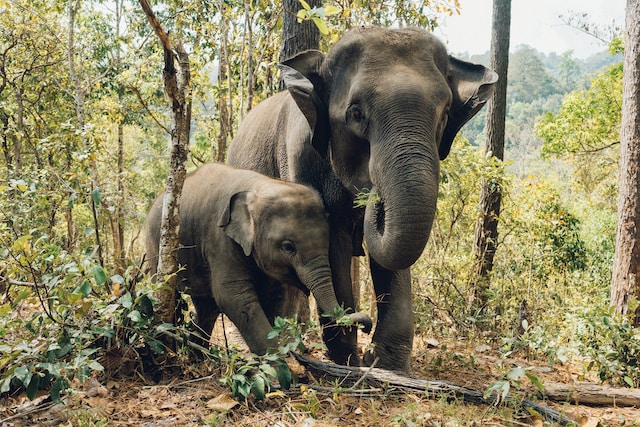12 tips on how to release animals into the wild painlessly
Ecologists and biologists are constantly discussing the fact of how important the reintroduction of species into their natural habitats is. This important strategy aims to restore ecosystems and prevent biodiversity loss. In this text, we will discuss some important strategies that can prioritize the well-being of species seeking a new life in their native environments.
What is the reintroduction of species in simple words?
Speaking in plain terms, the reintroduction of species is a special conservation strategy aimed at returning animals or plants to their native habitats after they have faced extinction. It means that they are carefully released into the wild in areas where they used to live. Conservationists watchfully monitor and plan these reintroductions to help rebuild populations, restore ecosystems, and prevent biodiversity loss. Therefore, reintroduction helps to restore the overall health of ecosystems and promote a more balanced coexistence between species and their habitats.
Tips on how to release animals into the wild painlessly
The whole reintroduction process requires scrupulous planning and empathetic execution. To ensure a painless transition for these animals, specialists use plenty of methods and strategies. Hence, we have collected the most commonly used tips for the successful release of wild species into their natural and familiar places of living. So, to make this process almost ideal and painless for animals, conservationists should do the following:
- Assess habitat. First of all, specialists conduct a thorough assessment of the habitat. They must be sure that it meets the species’ specific requirements, including food, shelter, and water.
- Train behavior. Specialists use various behavioral training methods to equip species with essential survival skills. For example, they can teach them the missing hunting techniques, predator avoidance, and foraging behaviors.
- Check health. Biologists always conduct comprehensive health screenings to identify and treat any probable diseases or health issues. You understand that healthy animals will always have more chances to thrive in their natural habitat.
- Consider genetic diversity. Ecologists always prioritize genetic diversity when choosing animals for release. A varied set of genes significantly boosts the species’ adaptability and resilience to any unexpected environmental changes.
- Engage communities. It is always critical to involve the local population in the reintroduction process. When informed, many people can feed released animals in their local areas. Statistics show that some individuals in poor regions even take guaranteed approval installment loans for bad credit to support species.
- Manage food supply. It is another vital issue in the process of reintroduction of animals. Ecologists and foresters always try to fully manage the food supply during the acclimatization period. It usually involves supplemental feeding in the first stage. It gradually reduces human help and encourages natural foraging behaviors.
- Use tracking devices. The newest monitoring technologies are always used to follow the released animals as closely as possible. Various tracking devices help scientists to assess species behavior, movement patterns, and overall health.
- Try to prevent imprinting. Specialists do their best to decrease human contact to prevent imprinting. Animals must not become overly dependent on human interaction, which could put in danger their ability to survive autonomously.
- Consider weather conditions. The release time should correspond with favorable weather conditions. It is necessary to reduce stress on the animals during their first exposure to the wild. Statistics show that many species never survive owing to extreme weather events in the early stages.
- Control predators. When thinking about the reintroduction of species to new areas, biologists use various measures to control or alleviate any potential threats from predators. This usually involves momentarily managing local predator populations to provide released animals with more chances of survival.
- Study group dynamics. It is vital to carefully consider the social structure of the species. Some animals may better survive when released alone. Others should always be released in small or big groups. Hence, it is critical to study the social structure of animals.
- Provide support. It is also important to provide animals with post-release support. This can be such measures as additional feeding and health monitoring.
Final words
To crown it all, the process of reintroducing species into the wild is delicate. It requires a careful and scientific approach. Moreover, specialists should use painless reintroduction methods only. So, if conservationists integrate these tips into the reintroduction process, it will undoubtedly boost the probability of a successful transition for species returning to their natural habitats and enhance their chances of survival. Biologists and ecologists keep on saying that release becomes a crucial step in preserving biodiversity and restoring the delicate balance of ecosystems.
